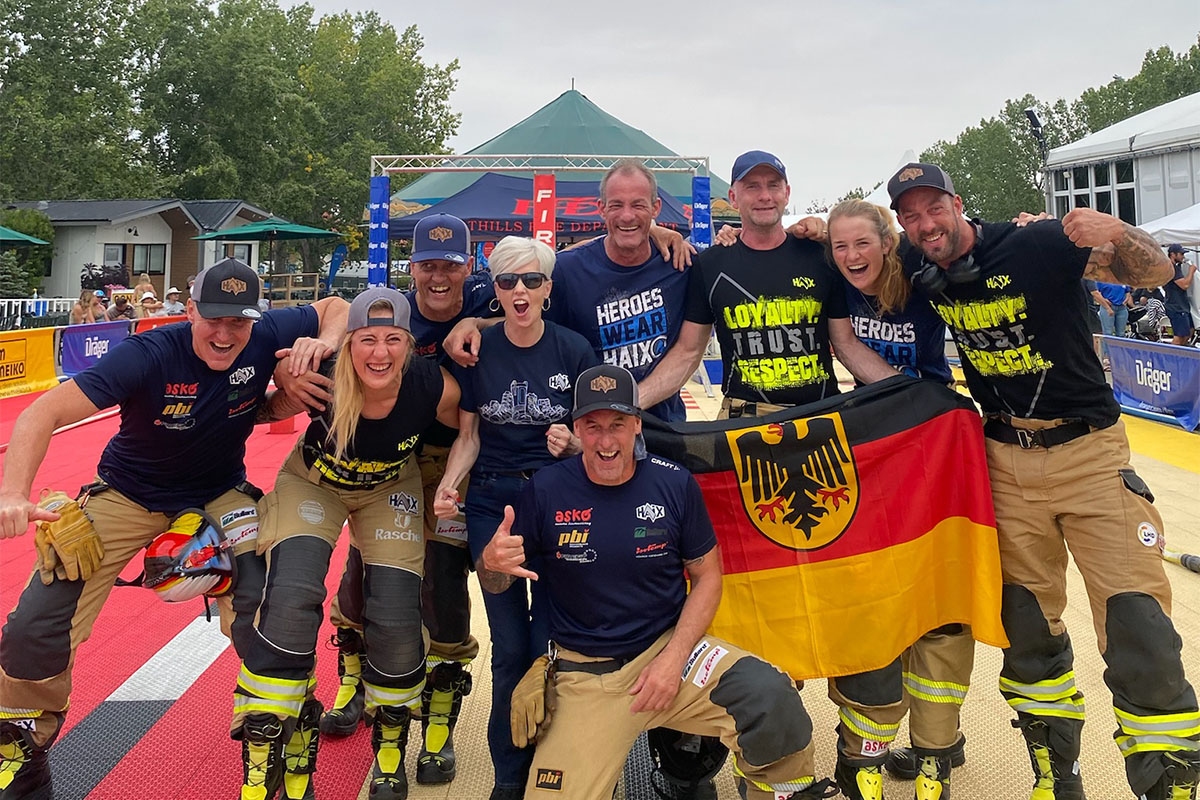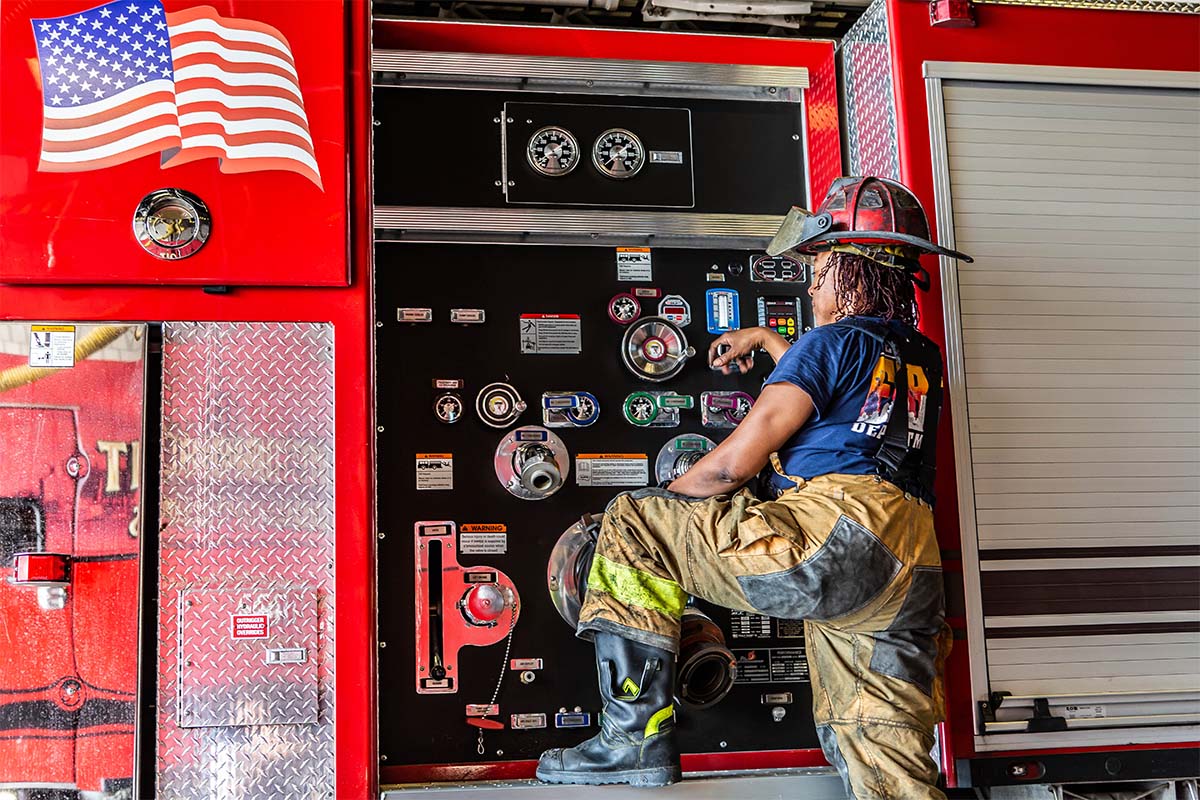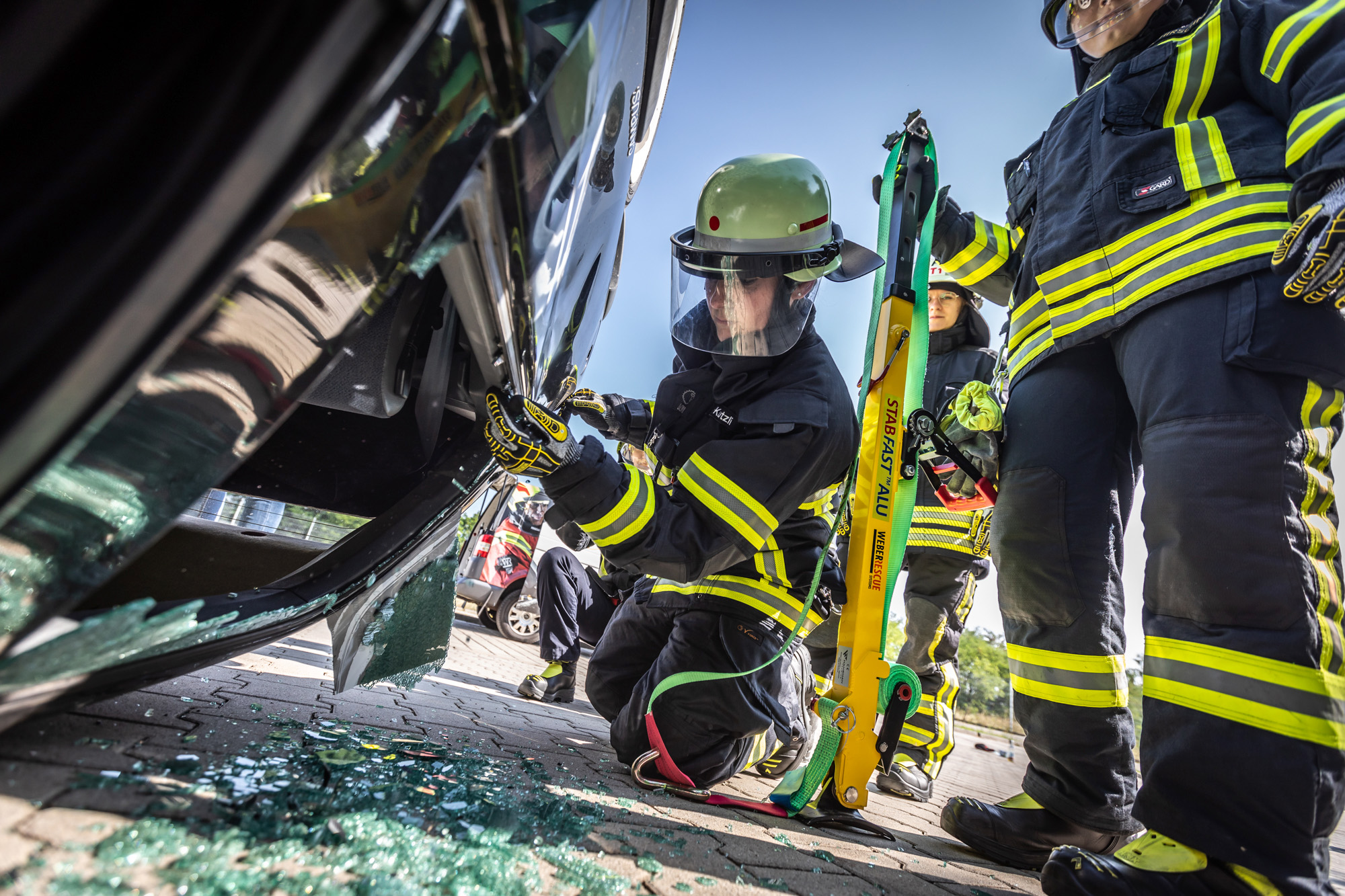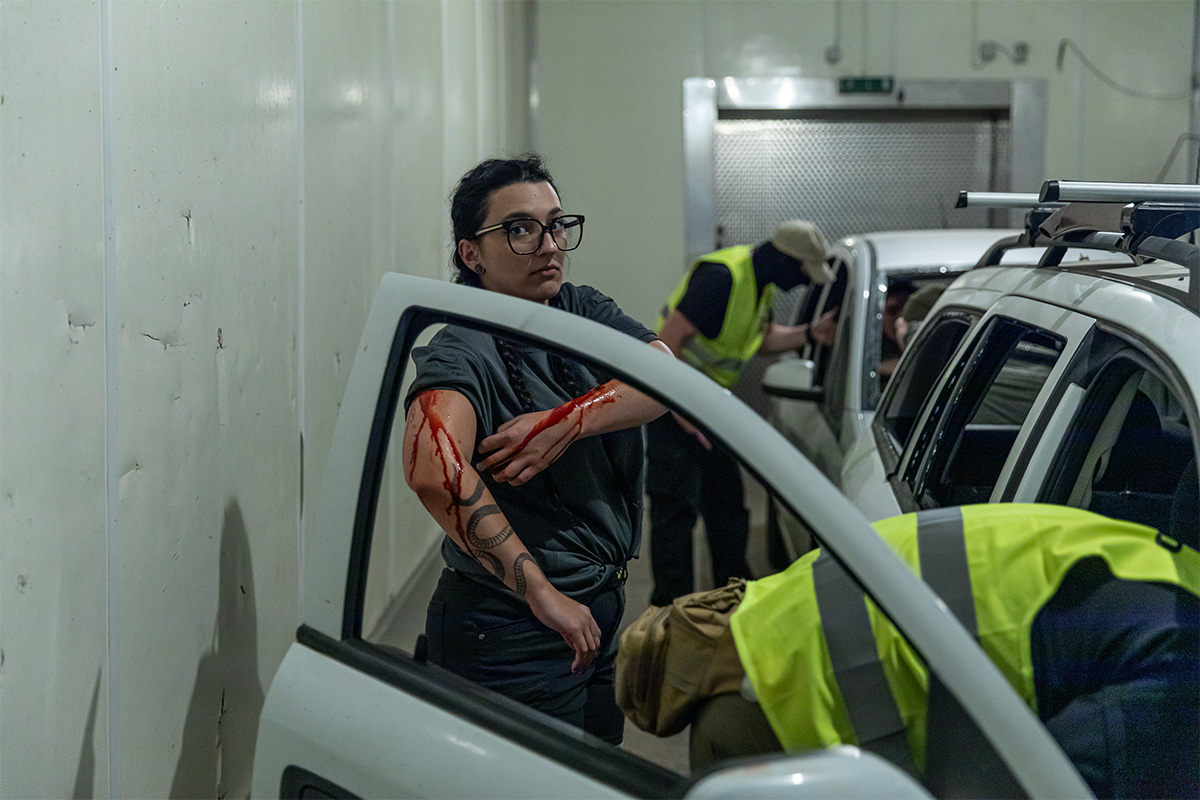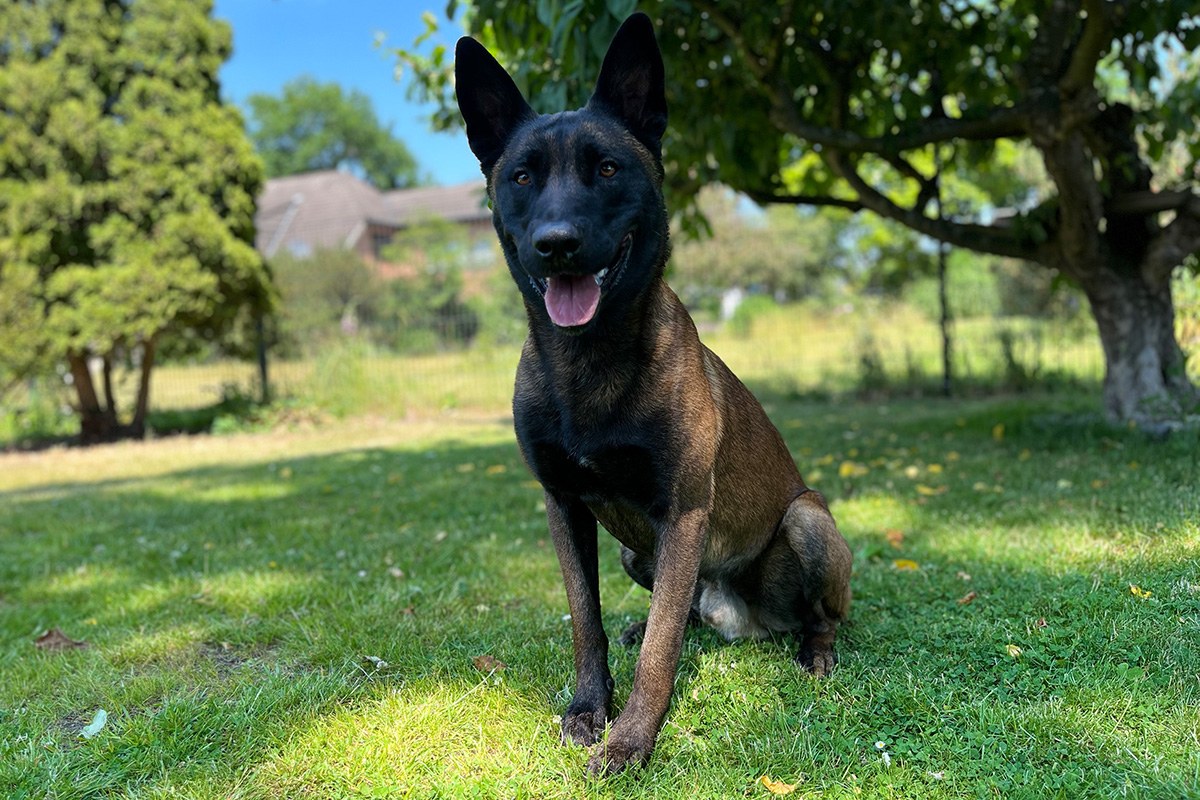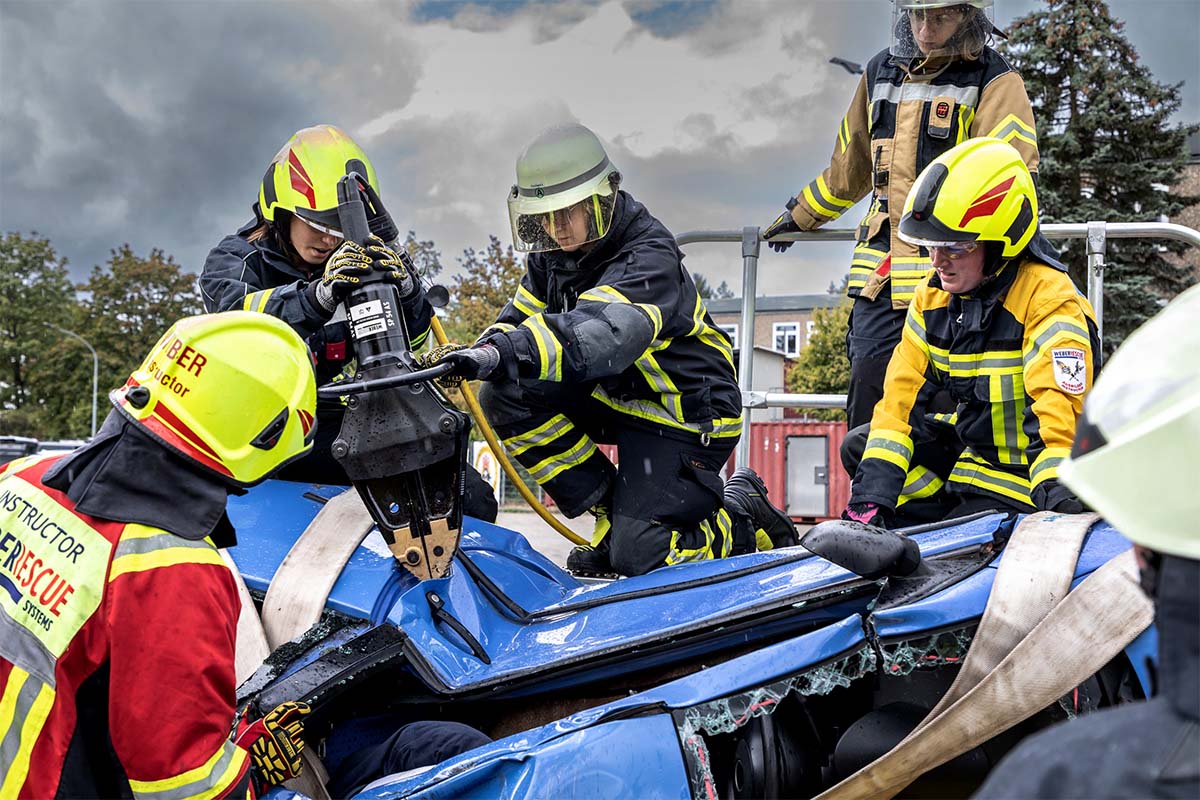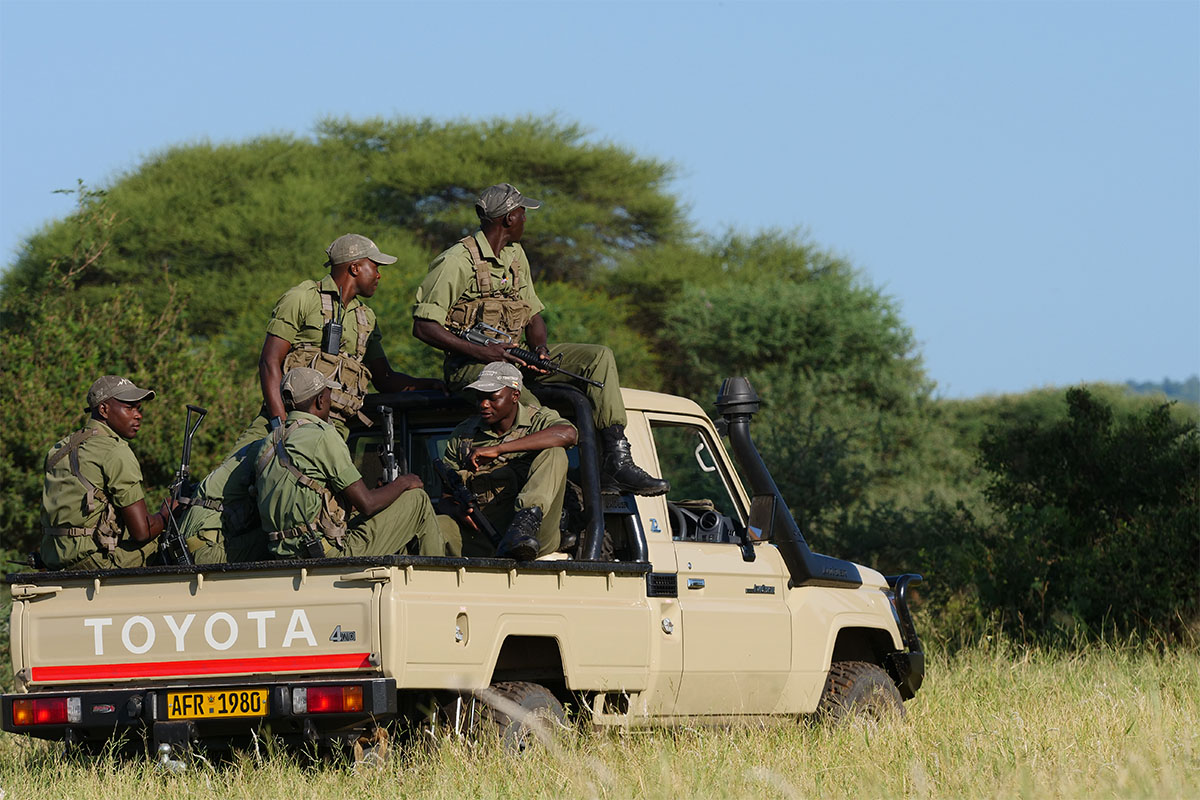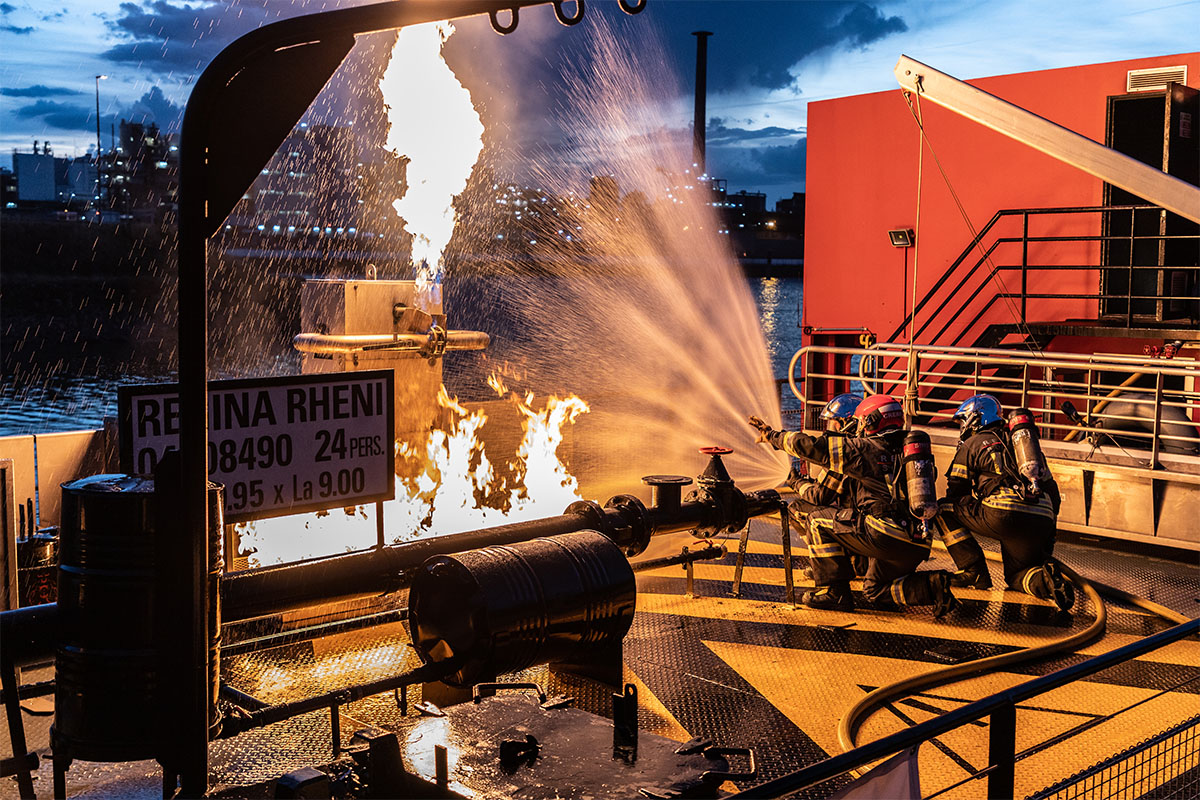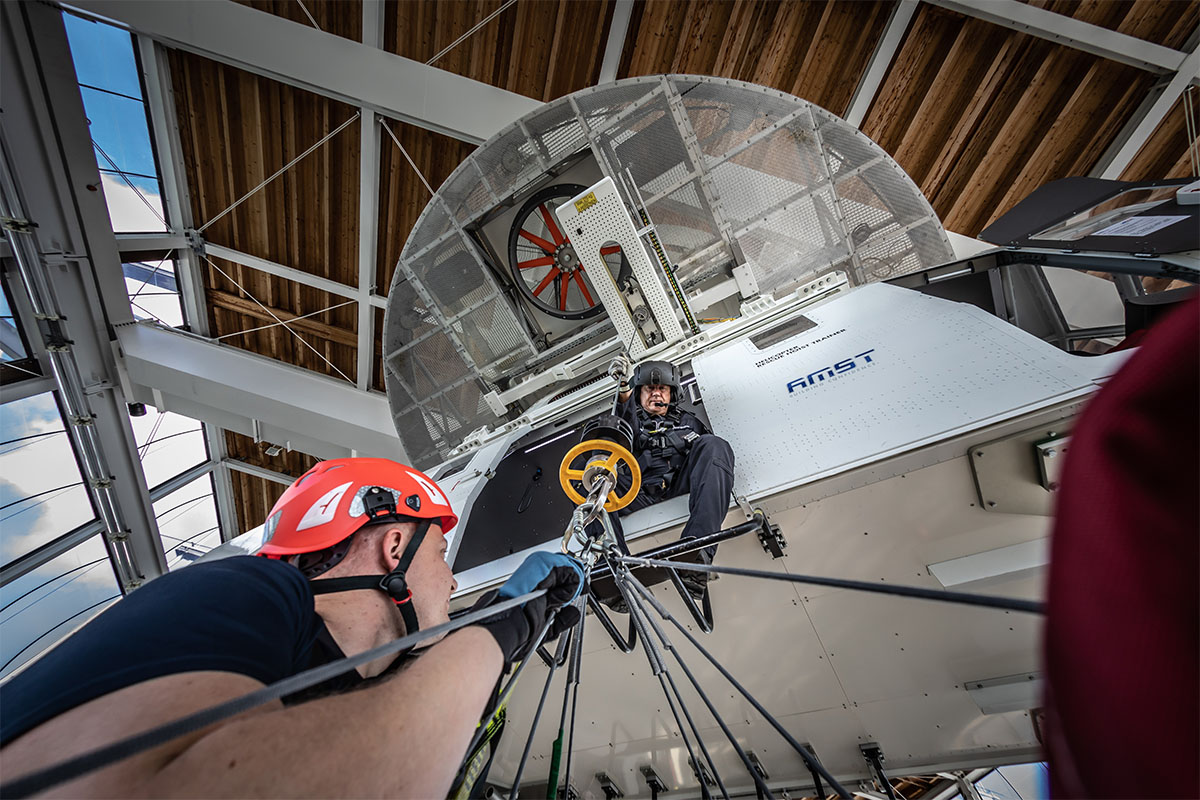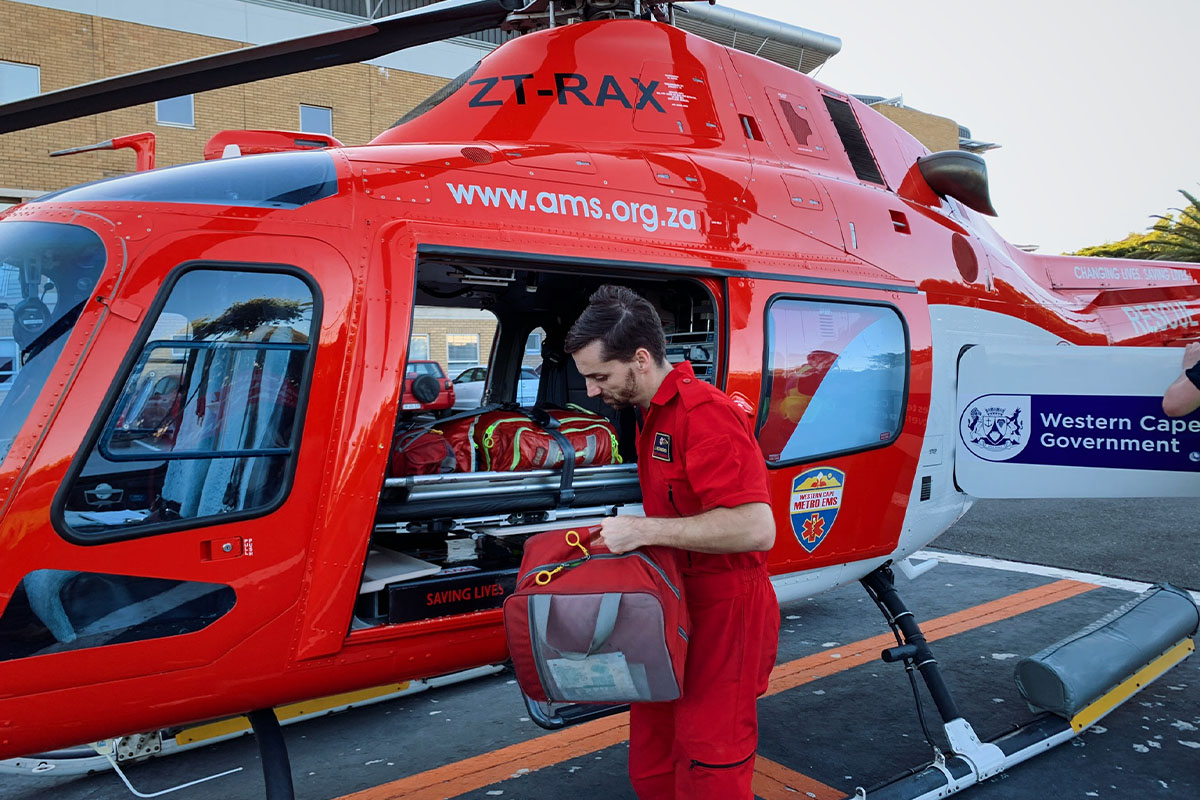In early September, twelve German firefighters made their way to the FireFit World Championships to compete on the red-and-yellow course in Spruce Meadows, Canada. Besides a number of titles, the German competitors also took home some lasting memories. Firefighter Anna Möller reports on the event.
Goosebumps at the opening ceremony
“When I am called to duty, God, whenever flames may rage; Give me the strength to save some life, whatever be its age. Or save an older person from the horror of that fate. Enable me to be alert and hear the weakest shout, and quickly and efficiently to put the fire out.” – A.W. Smokey Linn
With these words, an excerpt from the “Firefighter’s Prayer”, this year’s FireFit World Championships in Canada were officially opened. We found the ceremony deeply touching. Each athlete competing in the championships was called onto the course by name. Together, we listened to the Canadian national anthem and remembered our comrades who had passed away. Then, in memory of Queen Elizabeth II, the British national anthem played. All the while, the Canadian and British flags flew at half-mast. It was a very moving moment, above all for the athletes from the United Kingdom.
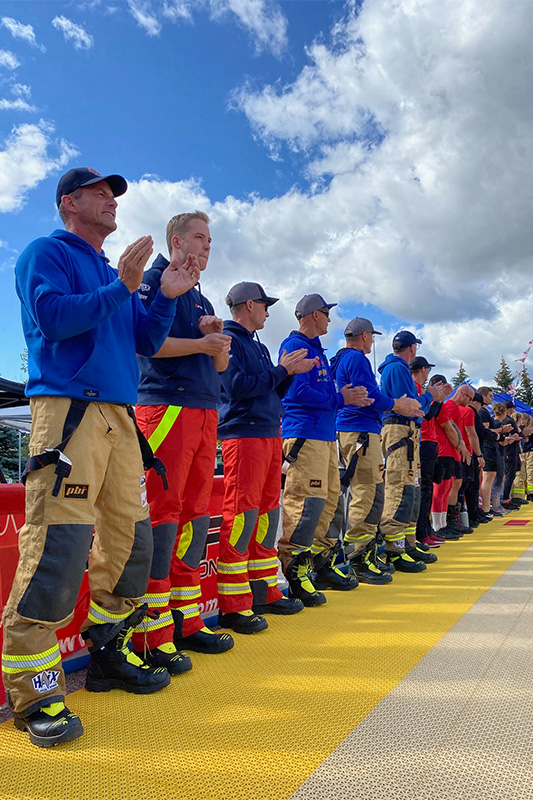
Getting to know the Canadians
Heading into the registration tent, we were welcomed by Hilary McRoberts, the “mother of FireFit”. She set up the first FireFit competition in Canada with her husband some 29 years ago. Since then, the pair have toured North America with their red-and-yellow competition course – which includes a 12-meter-high tower – and organized numerous events. Meeting them in person was a true honor for us. In 2021, the competition finally made its way to Europe in the form of “FireFit Europe”, closely replicating the Canadian original.
After checking in at the registration tent and filling out the necessary forms, we decided to scope out the course. Which elements were different to the European version? What would be the best route? How would we be able to climb the tour the fastest? Our Canadian counterparts soon introduced themselves and gave us a few tips. Brad, who went on to become World Champion, went through the various obstacles with us, highlighting a few of the pitfalls. We didn’t have to ask; he was simply happy to help. And Brad wasn’t the only one, as all the other Canadians were equally amenable. They let us store our bags in their tents and relax there between races. Hospitality was writ large and we felt entirely welcome. So, with the formalities over, the event proper could begin.
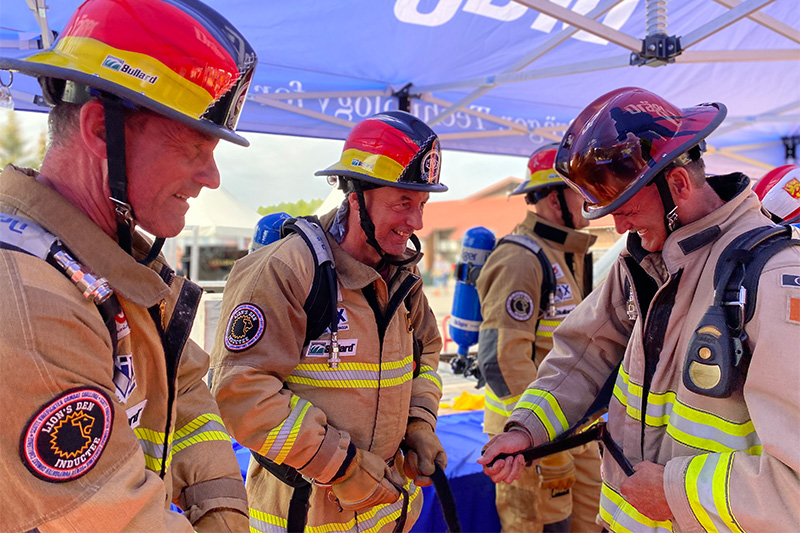
The qualification round begins
“GO!” shouted the referee, as the flags were thrown up into the air. I sprinted up the tower with my 19kg hose pack strapped to my back. When I reached the top, I took off the 19kg “donut roll” and placed it in the box. I ran back down as fast as I could before heading to the force machine and hammering the weight backwards. Next was the slalom, the hose hoist and, last but by no means least, the dummy drag with an 85kg dummy called Randy. I had to drag Randy backwards for 30 meters until I reached the finished line. Finally, I had a chance to breathe, celebrate – and curse a few seconds lost here and there over the course. Still, with one race checked off, I had the chance to do better in my next solo run!
The tandem challenge, known as “Tech 2” in the Canadian event, features an additional technical trial: after the force machine, the canister must be removed from the first runner’s carrier plate. Once correctly fitted and with the support strap connected to the breathing apparatus, the second athlete can start their run with the canister on their back. In the relay race, the athletes pass on a flashlight generally referred to as a baton. With the qualification races finished, we were delighted to have all qualified for the finals days. So, when the weekend came, it all started again!
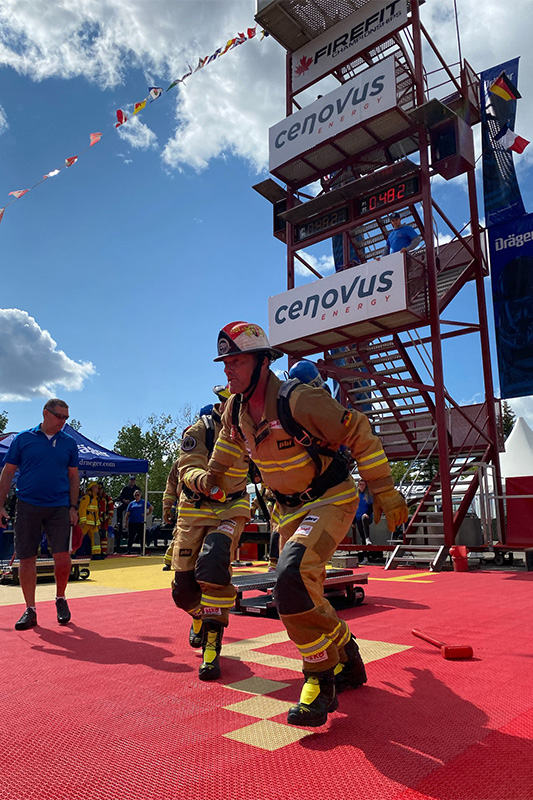
When in Canada, do as the Canadians do
Before each race, we were all in a state of complete concentration. All the same, we made sure to leave time to have fun. We chatted with the Canadians a lot, sharing food and enjoying a laugh together, trying out new techniques and checking out each other’s kit. PPE (personal protective equipment) is very different in Europe and North America. Although the minimum materials standards are the same the in both regions, the Canadian outfits are much larger, feature a lot more pockets, and look bulkier overall. The Canadians also have heavy helmets and boots that look more like gumboots. By comparison, German PPE is more lightweight, athletic and a more striking color. Yet, both sets of equipment have one thing in common: they are designed to put out fires, which burn just the same all round the world.
During our competition runs, we all wore the FIRE Eagle 2.0. Our firefighting boots with neon-yellow protective caps aroused the curiosity of other competitors. This made the German tent a popular meeting point, with everyone hoping to get a closer look at the boots and try them on. On the course itself, we were able to show exactly what our yellow-capped boots could do. When the finals came round on Saturday and Sunday, we pushed ourselves to the limit again, collecting a handful of medals and waving our flag proudly on the podium. We claimed the title of World Champion and Vice Champion in various age groups and categories, along with a number of bronze medals and PBs! And, when it came to celebrating, we were entirely in tune with the Canadians once again. Once the World Championships had concluded, we all gathered in the Greta Bar, enjoying the evening together and toasting our successes.
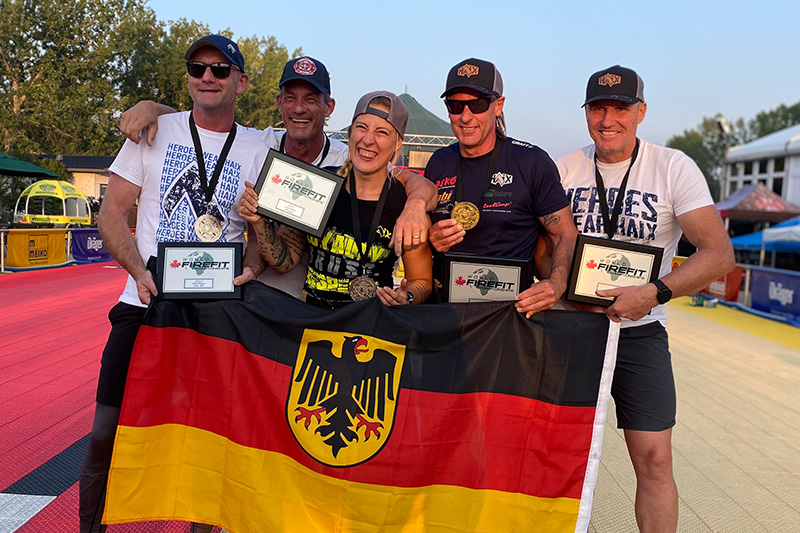
This is how the German athletes cleaned up
- World Champions, Relay, Over 40s/50s: HAIX Wild 50’s with Dietmar Kirsch, Gerd Müller, Heiko Gehrke, Magnus Hirschfeld and Ralf Sikorra
- World Champion, Individual, Over 55s: Gerd Müller, HAIX Wild 50’s
- World Champions, Tech 2: Gerd Müller & Magnus Hirschfeld, HAIX Wild 50’s
- World Champions, Chief: Martin Lauer
- Silver medal, Individual, Women: Meghann Krüger, Team HAIX
- Silver medal, Over 50s: Magnus Hirschfeld, HAIX Wild 50’s
- Silver medal, Over 55s: Ralf Sikorra, HAIX Wild 50’s
- Silver medal, Tech 2: Meghann Krüger & Pascal Dülge, Team HAIX
- Silver medal, Tech 2: Heiko Gehrke & Robert Green
- Bronze medal, Individual, Over 55s: Dietmar Kirsch, HAIX Wild 50’s
- Bronze medal, Tech 2: Dietmar Kirsch & Ralf Sikorra, HAIX Wild 50’s
- Bronze medal, Tech 2: Anna Möller & Martin Lauer
